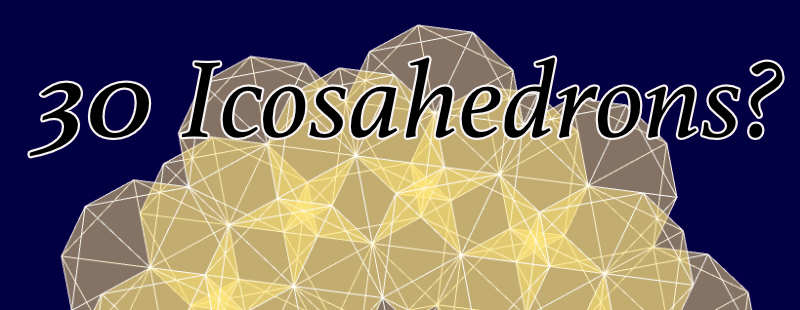
Thirty icosahedrons, (or ‘icosas’), are placed on the thirty edges of one icosa, and precisely scaled in volume such that each icosa just touches their neighboring icosa, and the original icosa at this point is larger in size than others.
A word was needed to describe this kind of “concentric clustering” and the word ‘multiplexing’ might suffice for now.
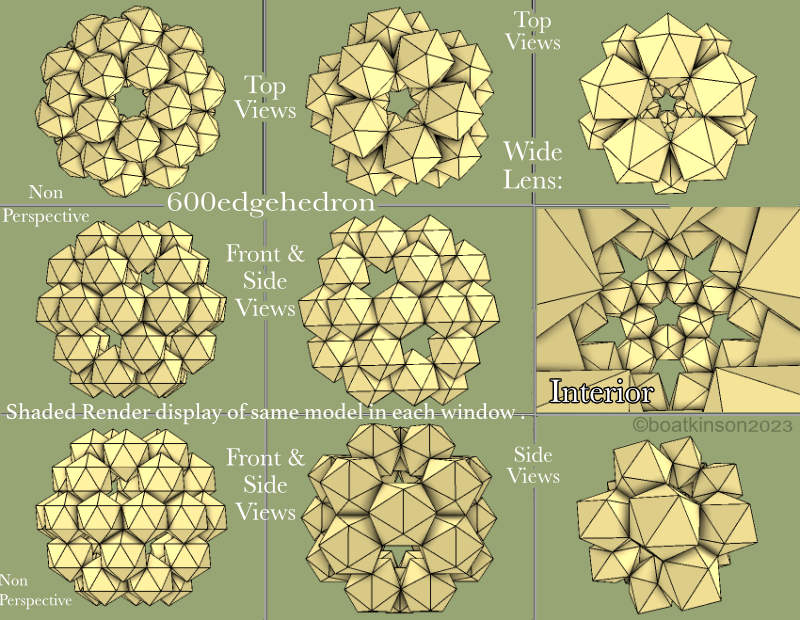
The nine-view image displays key view points for more contemplation of what becomes many kinds of possible arrangements.
Mental exercising with precise geometry can provide refreshing balance.
In this work the math verifies precision and computer apps partly automate these geometrically artistic constructions, if many confusing details are organized accurately.
Many varied kinds of “sacred art” can basically invoke higher emotionality which is sorely needed today, to ensure that lower emotionality doesn’t crash mankind into hate and distress.
We should know by now that where attention goes, energy deploys, and uplifting energies greatly improve life on earth.
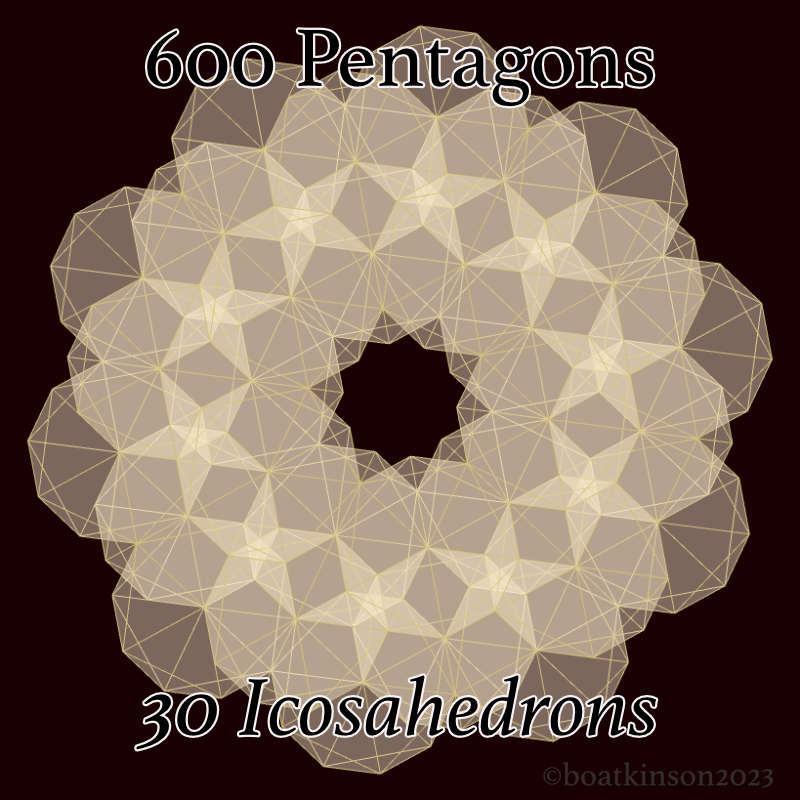
How are these stars formed?
With partial transparency the precise arrangement digitally renders, (or “stacks up”) the most brightness, due to the most underlying surfaces, all of which refracts the star shapes.
That these actually form stars is entirely a mathematical function, while it is also an opportunity for thought.
Unfortunately, the geometry app used a convention of doubling the count of ‘edges’ and ‘faces’, due to the task of coding 3d for its own sake, therefore some of the figures are double or halved depending on polyhedral joinery. The app Inspector-of-properties was vital here, and gratefully catches the “internal 3d problems”.
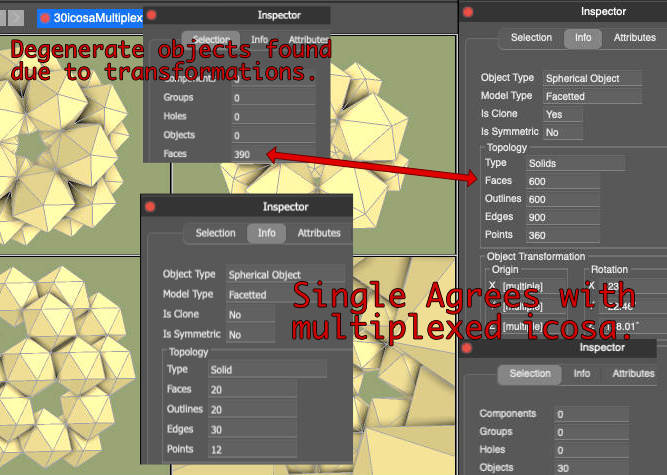
In due course coordinated editing-tools across all domains, might improve presentations.
Easier naming and sharing was expected, but defining and distinguishing polyhedral properties unambiguously became a bit tedious for conversation. The value of terms might help mindful exploration, but some minds may prefer visual contemplation alone, and ignore verbiage as a distant option.
The visual-mental focus is prioritized to share online.
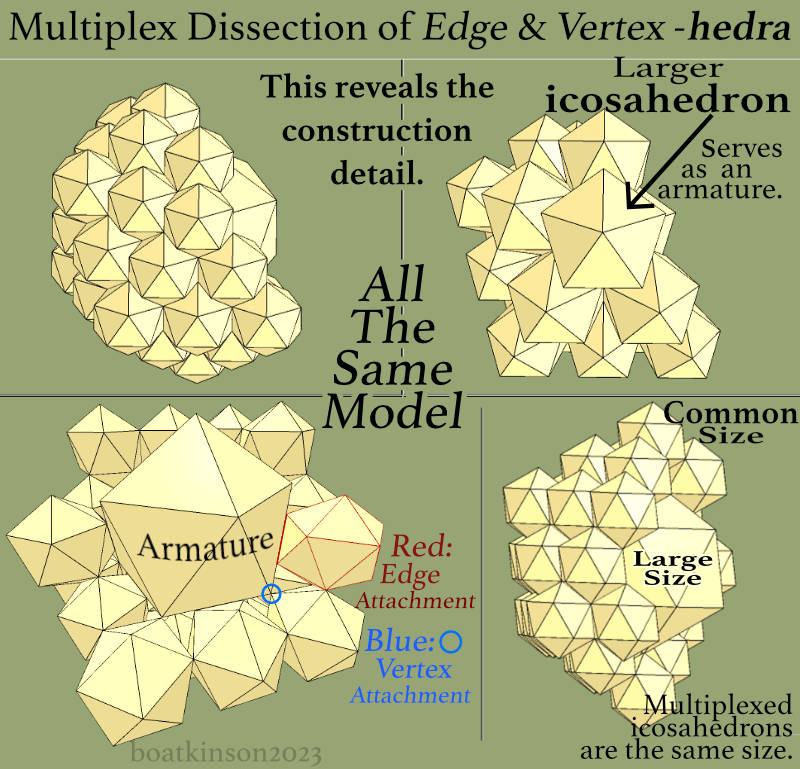
Various procedures for modeling come to mind after posting the first series linked on the index below, and differing brands of 3d apps may each offer other kinds of tools and entities to utilize.
The 3d model was also dissected to reveal what makes the stars stand out. A dark background was used to increase contrast of the rendered image. The dodecahedrons were individually deleted from the 3d cluster so as to leave two stars, which proved to consist of five dodecahedrons each.
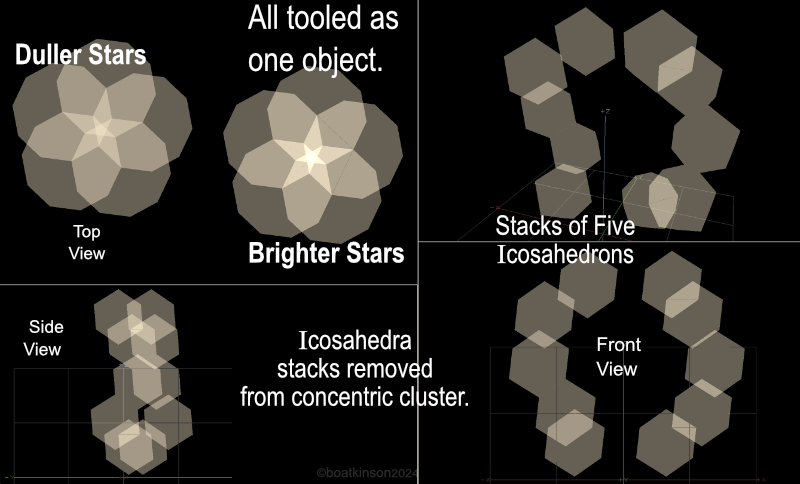
It turned out that five vertically positioned and attached, (via Boolean Unions), dodecahedra are required to form stars, edge attached with some sort of rendering effect like "stacked refraction or reflection". Constant and not shader rendering has been used for all the multiplexed polyhedrons in this series. This tends to rule out shading mixed into the rendering effect.
Next is an enlarged image of five overlapping an image of thirty, and the image of five suggests a third star is revealed, but it is lost when clustered in the 3d concentric multiplex.
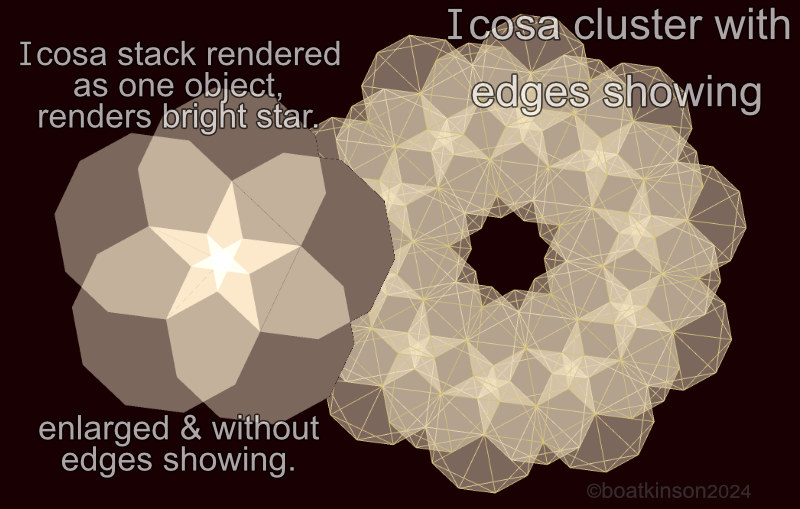
2d images composed the above image to compare 3d renders. A “full-shaded-rendering” tool was which allows revealing the edges or hiding them, and varying the transparency.
The ratios of volume sizes may deserve reviewing as another avenue of study.
Multiple strings of polyhedra may also become continuing sets of successive tiers extending outwardly, as a further exploration.
These and other tasks might follow.

